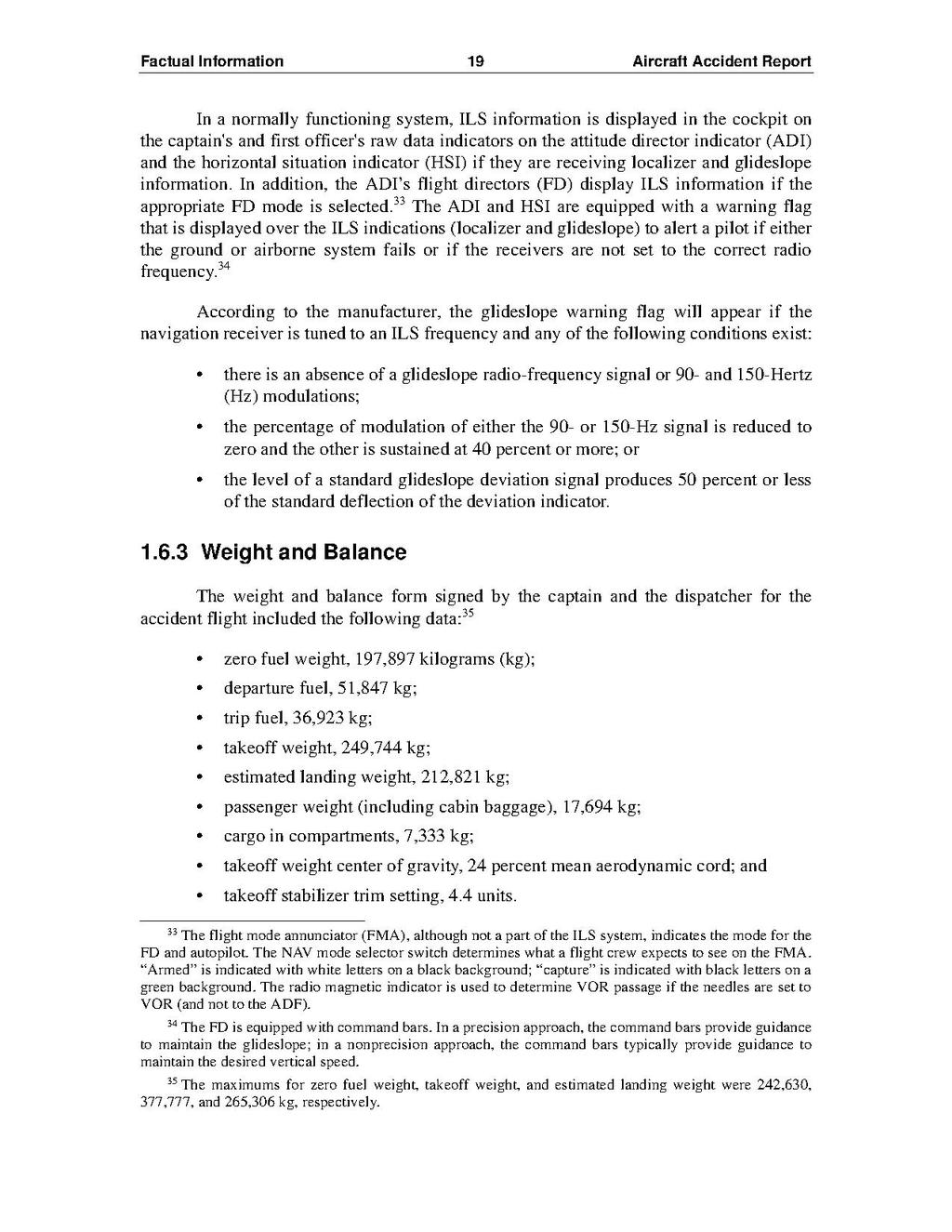In a normally functioning system, ILS information is displayed in the cockpit on the captain's and first officer's raw data indicators on the attitude director indicator (ADI) and the horizontal situation indicator (HSI) if they are receiving localizer and glideslope information. In addition, the ADI's flight directors (FD) display ILS information if the appropriate FD mode is selected.[1] The ADI and HSI are equipped with a warning flag that is displayed over the ILS indications (localizer and glideslope) to alert a pilot if either the ground or airborne system fails or if the receivers are not set to the correct radio frequency.[2]
According to the manufacturer, the glideslope warning flag will appear if the navigation receiver is tuned to an ILS frequency and any of the following conditions exist:
- there is an absence of a glideslope radio-frequency signal or 90- and 150-Hertz (Hz) modulations;
- the percentage of modulation of either the 90- or 150-Hz signal is reduced to zero and the other is sustained at 40 percent or more; or
- the level of a standard glideslope deviation signal produces 50 percent or less of the standard deflection of the deviation indicator.
1.6.3 Weight and Balance
The weight and balance form signed by the captain and the dispatcher for the accident flight included the following data:[3]* zero fuel weight, 197,897 kilograms (kg);
- departure fuel, 51,847 kg;
- trip fuel, 36,923 kg;
- takeoff weight, 249,744 kg;
- estimated landing weight, 212,821 kg;
- passenger weight (including cabin baggage), 17,694 kg;
- cargo in compartments, 7,333 kg;
- takeoff weight center of gravity, 24 percent mean aerodynamic cord; and
- takeoff stabilizer trim setting, 4.4 units.
- ↑ The flight mode annunciator (FMA), although not a part of the ILS system, indicates the mode for the FD and autopilot. The NAV mode selector switch determines what a flight crew expects to see on the FMA. "Armed" is indicated with white letters on a black background; "capture" is indicated with black letters on a green background. The radio magnetic indicator is used to determine VOR passage if the needles are set to VOR (and not to the ADF).
- ↑ The FD is equipped with command bars. In a precision approach, the command bars provide guidance to maintain the glideslope; in a nonprecision approach, the command bars typically provide guidance to maintain the desired vertical speed.
- ↑ The maximums for zero fuel weight, takeoff weight, and estimated landing weight were 242,630, 377,777, and 265,306 kg, respectively.
